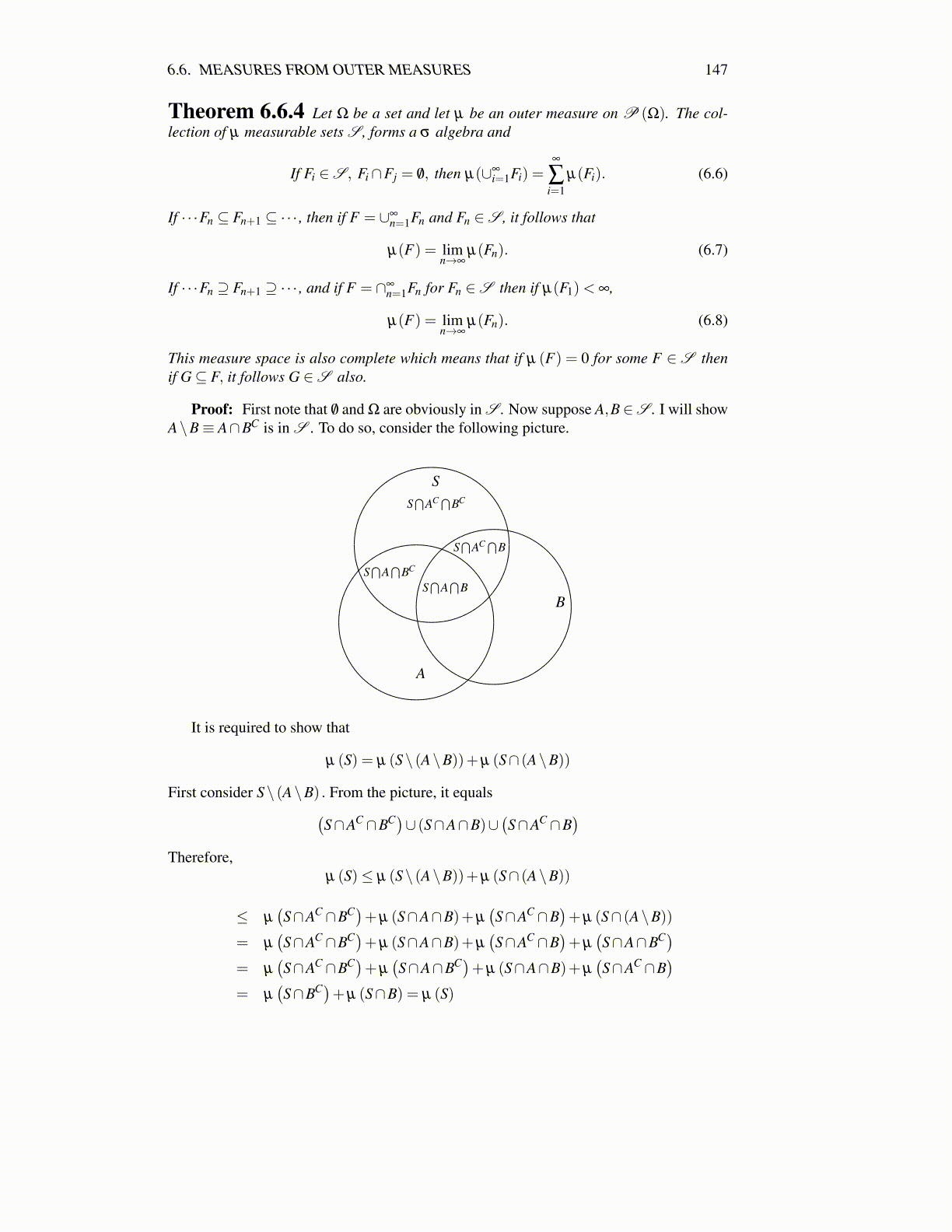
6.6. MEASURES FROM OUTER MEASURES 147
Theorem 6.6.4 Let Ω be a set and let µ be an outer measure on P (Ω). The col-lection of µ measurable sets S , forms a σ algebra and
If Fi ∈S, Fi∩Fj = /0, then µ(∪∞i=1Fi) =
∞
∑i=1
µ(Fi). (6.6)
If · · ·Fn ⊆ Fn+1 ⊆ ·· · , then if F = ∪∞n=1Fn and Fn ∈S , it follows that
µ(F) = limn→∞
µ(Fn). (6.7)
If · · ·Fn ⊇ Fn+1 ⊇ ·· · , and if F = ∩∞n=1Fn for Fn ∈S then if µ(F1)< ∞,
µ(F) = limn→∞
µ(Fn). (6.8)
This measure space is also complete which means that if µ (F) = 0 for some F ∈S thenif G⊆ F, it follows G ∈S also.
Proof: First note that /0 and Ω are obviously in S . Now suppose A,B∈S . I will showA\B≡ A∩BC is in S . To do so, consider the following picture.
S⋂
AC⋂BC
S⋂
AC⋂B
S⋂
A⋂
BS⋂
A⋂
BC
A
B
S
It is required to show that
µ (S) = µ (S\ (A\B))+µ (S∩ (A\B))
First consider S\ (A\B) . From the picture, it equals(S∩AC ∩BC)∪ (S∩A∩B)∪
(S∩AC ∩B
)Therefore,
µ (S)≤ µ (S\ (A\B))+µ (S∩ (A\B))
≤ µ(S∩AC ∩BC)+µ (S∩A∩B)+µ
(S∩AC ∩B
)+µ (S∩ (A\B))
= µ(S∩AC ∩BC)+µ (S∩A∩B)+µ
(S∩AC ∩B
)+µ
(S∩A∩BC)
= µ(S∩AC ∩BC)+µ
(S∩A∩BC)+µ (S∩A∩B)+µ
(S∩AC ∩B
)= µ
(S∩BC)+µ (S∩B) = µ (S)